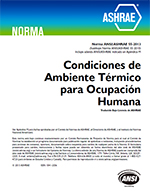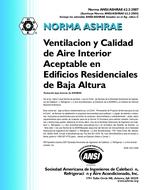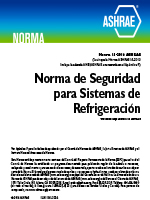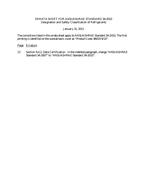Description
ASHRAE standard 55, ISO 7730 and chapter 9 in ASHRAE Handbook–Fundamentals titled ‘thermalcomfort’ provide guidance for the assessment of thermal comfort in buildings. As inputs, the method usesclimate parameters, the users’ activity level and the clothing insulation of the garments worn by theoccupants.
The standard provides guidance on the determination of these parameters and provides examples ofvalues for activity level and clothing insulation. However, for the latter, the emphasis is on western styleclothing, while in large parts of the world other clothing styles are worn, e.g. shalwar kameez in Pakistan,African clothing in Nigeria or Sarees in India. In order to use the methodology of ASHRAE 55 in nonwesternregions, insulation data for such clothing is required. In the present project, ASHRAE 1504-RP,such data was collected for a range of non-western clothing types.
Four different thermal manikins (male and female shapes) in three different laboratories (UK, Swedenand China), were used to determine the clothing insulation values of 52 clothing configurations. Thesefifty two configurations were also tested for the effects of air velocity on insulation and forty three weretested for the effects of posture (sitting) and walking. The observed reductions in insulation for both airvelocity and walking are higher than those presented in the literature for western ensembles,emphasizing the need for these new data. This effect is most likely related to more open weave fabricsand loose fit designs. Similarly the relation of the clothing surface area factor to intrinsic clothinginsulation was different from that published for western clothing. Prediction equations for the clothingsurface area factor fcl, based on the new data only had limited predictive power, which however was alsothe case for those obtained in the past for western clothing. This issue seems to be commonlyoverlooked, as the use of these prediction equations is widespread. It has to be concluded that reliable fclvalues can only be obtained when these are actually measured as in the present work. Having said this,the concept of the fcl factor for the non-western clothing may not work in the first place, as the widefalling robes and gowns do not match the cylindrical clothing and air layer model on which the fcl conceptis based.
The results provide an extensive database of insulation values of non-western clothing styles in differentwear configurations, in different air velocities, postures and movement. As such this is expected to be avaluable addition to ASHRAE 55 and ISO 7730 and ISO 9920.
In addition, data obtained on the insulation of individual body parts can be used by CFD modelers toincorporate realistic insulation data in their models.
Product Details
- Published:
- 2016
- Number of Pages:
- 203
- Units of Measure:
- SI
- File Size:
- 1 file , 10 MB
- Product Code(s):
- D-RP-1504




